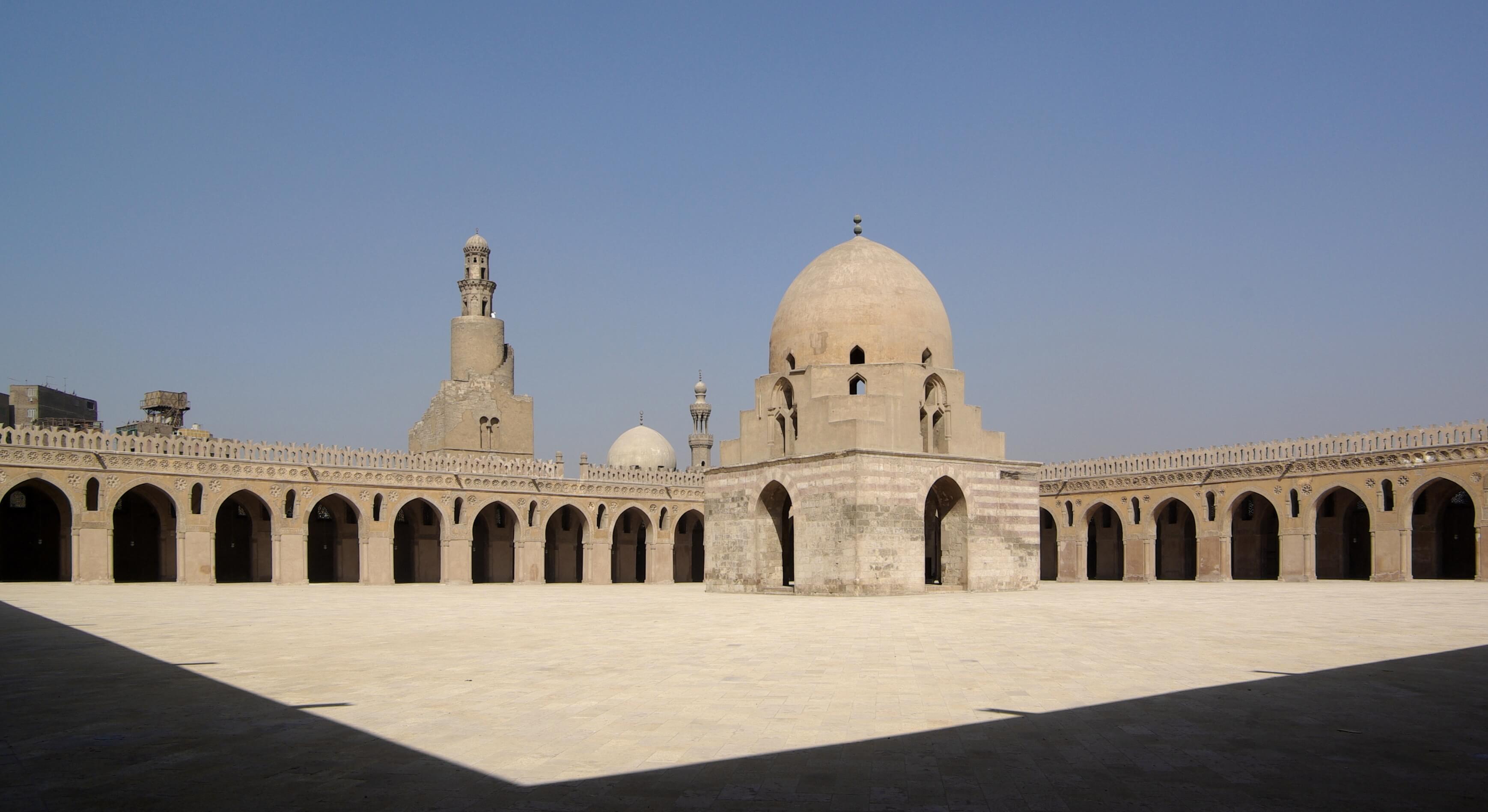Ahmad Ibn Tulun Mosque
The Mosque of Ibn Tulun is located in Cairo, Egypt. It is arguably the oldest mosque in the city surviving in its original form, and is the largest mosque in Cairo in terms of land area.
It is the only remaining monument in the City of Qata’i’, established in AH 256 / AD 870 as the capital of the Tulunid state in Egypt. The floor plan of the mosque assumes the form of a square, measuring approximately 26,318 sq m. Its architectural layout adheres to the traditional plan for the congregational mosques in the region consisting of an open, square central courtyard measuring approximately 92 m sq. In the middle of the courtyard is an ablutions fountain, an innovation of the Mamluk sultan, Hosam al-Din Lajin (AH 696–8 / AD 1297–9) in AH 696 / AD 1296. Four porticoes surround the courtyard, the largest is the eastern portico (that of the qibla) consisting of five arcades. As for the other three porticoes, each of them consists of two arcades. On the north, west and south sides, a large wall surrounds the mosque. Between these walls and the walls of the building is an open area called the ziyada, an example of which may also be seen in the Great Mosque of Samarra in Iraq (built AH 237 / AD 850), and in the Great Mosque of Susa in Tunisia (built AH 236 / AD 851). The Congregational Mosque of Ibn Tulun is considered to be one of the biggest mosques in Egypt whose entire surface area including the ziyada exceeds 26,318 sq m, and which is made of fired brick





